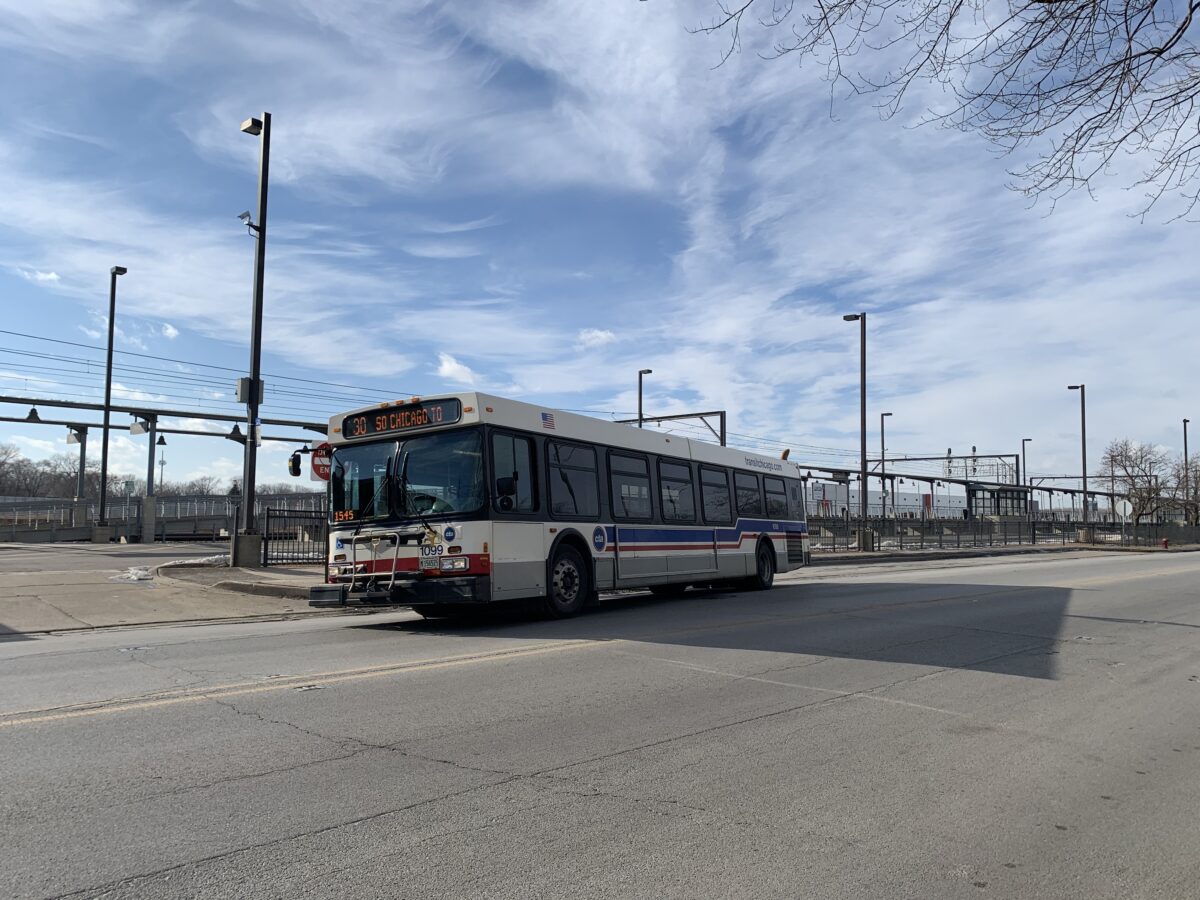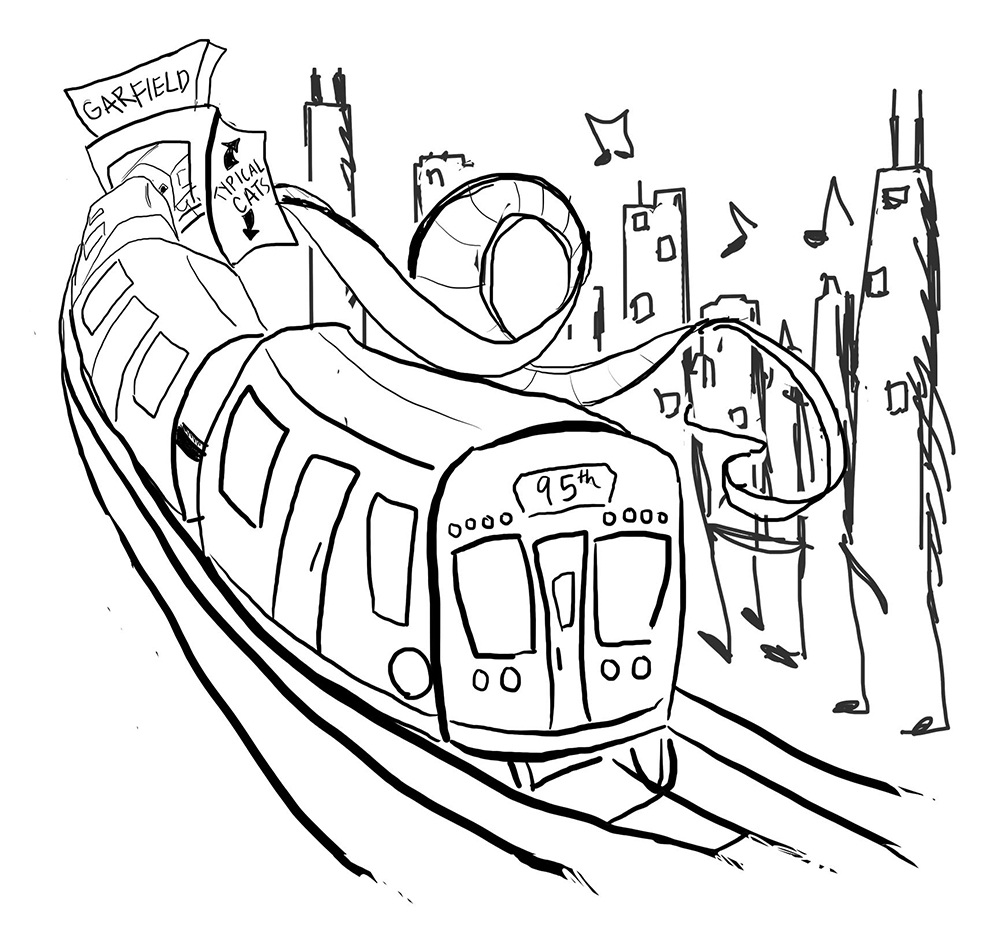Residents across the Southeast Side are all too familiar with the promise of a train or bus that never comes. Between unreliable schedules, insufficient routes, and ghost trains and buses, for many people in the 10th Ward commuting is a struggle. For those who rely on public transit, these issues can lead to safety risks and make it difficult to keep a job.
Insufficient public transit can have a disproportionate effect on unhoused people, according to Arnold Bradford, the executive director of Crossroads Collaborative, a community advocacy group focused on issues related to transportation and planning.
He recalled a young unhoused man he knew who was trying to find a job and support his child. Bradford said the man got the opportunity to interview with CRRC Sifang America, a company that manufactures rail cars for the CTA in Hegewisch.
“He finally got a [route] 30 bus, which was late of course. He got off [the bus], he couldn’t get to the [company] because there’s a railroad track there,” Bradford said. “So he had to take a Pace bus, gets off of that Pace bus, then he has to transfer to another Pace bus going in the opposite direction toward the plant…so he finally figured it out. After all these transfers, you lose your time. He gets to the plant gate and he has to walk half a mile to the building down a dirt road. When he finally gets there, he’s a half hour late.”
Bradford said the man was told his interview time was over, and he would have to reschedule. “A desperate man, and this is what happens because of the bus.”
Hegewisch, sixteen miles southeast of the Loop, was home to Eastern European immigrants who worked in the community’s many steel mills in the early 20th century. Its population is now about one-third white, one-third Latinx, and one-third Black.
While many of the steel mills have closed or moved, Hegewisch remains surrounded by railways and surrounded by heavy industry, including the Ford Motor Company’s oldest automobile plant. The neighborhood is home to many well-frequented businesses like Chicago Pita Kitchen, Steve’s Lounge, and Baltimore Food and Liquors (formerly known as Drago’s), home to famous marinated shish kabobs.
But south of these staples near the intersection of Avenue O and South Brainard Avenue, the South Shore Line’s Hegewisch station is a skeleton of a building; structurally sound, but gutted. An automated voice chimes at the station, “Passengers may encounter a delay of ten to fifteen minutes.” The sound echoes against the off-white walls and burnt red tile. After fifteen minutes, the voice plays again.
Hegewisch is one of many neighborhoods in the Southeast Side haunted by “ghost trains,” a term coined to describe trains that transit trackers say are coming, but don’t arrive. A tracker might say an arrival is due in ten minutes, but after ten minutes, the timer on the tracker resets.
Every two weeks, in-home caretaker Ana Buda, who is seventy-two, sits on a bench at the Hegewisch station and waits for her train home after work. As a recent immigrant from Ukraine, she does not have a driver’s license, much less a car. Although she works in Hegewisch, her home is actually in Belmont Cragin on the Northwest Side. The trip is about forty-five minutes by car. Buda said it takes her almost three hours to go one-way via public transit. The South Shore train will take her to Millennium Station, where she will catch a bus to the nearest CTA Blue Line station and a train home.
That time doesn’t even factor in travel for errands and necessities. “I was going to an appointment for a shot for my osteoporosis at 12pm, and I did not get back until 10pm,” she said. The woman Buda takes care of was left alone for longer than anticipated so she said she had to ask a neighbor to stay with her. For residents without cars, which the Chicago Metropolitan Agency for Planning (CMAP) estimates is around 11.7 percent of Hegewisch, there can be no other option to get around.
Bradford said former 10th Ward Alderwoman Susan Sadlowski-Garza shares his frustration and has tried for years to improve Hegewisch’s public transportation. “If she can’t move the CTA, who can?”
Garza criticized the CTA, and specifically CTA President Dorval R. Carter Jr., who hasn’t shown up to past City Council hearings about South Side public transit. “CTA has not been at the forefront of transparency,” Garza said. “I’d like to see the CTA run more buses and have a more cohesive schedule with some stability, so people know if they’re going to catch a bus, it’s going to be there.”
A recent investigation by Block Club Chicago found that despite years of unreliable and unsafe service, Carter’s salary has continued to climb by tens of thousands of dollars every six months.
Another major transit issue is sporadic scheduling, which often leaves South Siders stranded downtown for long periods of time. “If I got done with meetings at 12:15pm, I would have to wait until three o’clock to catch the [Metra] train, because there was nothing coming back down south,” Garza said. “Back when I was a kid, they would go every fifteen minutes.”
South Shore Line train rider Arthur Larson, eighty-two, said the infrequency of Hegewisch trains and buses is particularly bad in the evenings. “If there’s no public transportation after a [certain] time, people can’t get to work, and customers can’t get to a business,” Larson said. “Transportation controls everything.”
While the CTA declined an interview, they responded via email to an inquiry regarding the Red Line extension, which will extend the Red Line as far south as 130th Street, running on the west side of Hegewisch. “This historic investment will finally provide affordable access to historically underserved and predominantly African-American people on the far South Side—benefitting not only residents and businesses south of 95th Street but also finally connecting that community by rail with the rest of the city,” the CTA wrote. Construction is scheduled to begin in 2026 and estimated to finish in 2029.
“I think it’s huge, it’s giving people more access,” Garza said. “But where the station is gonna be, people in Hegewisch have no way to get to the station. There are no buses that run east-west.”
Although the proposed station would be close to Hegewisch residents, it would be located on the opposite side of I-94, making it difficult to access on foot.
Peter Chico, the 10th Ward’s new Alderperson, did not respond to questions from the Weekly about his plans to address few transit options, ghost buses and trains, and his thoughts about the Red Line Extension.
And for the next six years or so, residents are stuck with the current public transit system, which some still find difficult to access. Vanessa Schwartz, executive director of Metropolitan Family Services’ Southeast Chicago Center, said she is particularly concerned for residents living in Chicago’s only mobile home community, located in Hegewisch.
Schwartz said she has seen residents of the mobile home community walking upwards of two or three miles from the Hegewisch station back to their homes due to insufficient bus routes. “And there’s no sidewalks in that area, so that becomes pretty dangerous,” Schwartz said. “I’ve seen people at nighttime in the pitch black dark walking, and I’m thinking ‘Oh my God, if I didn’t see them, I could’ve run them over.’”
Another concern for Schwartz is the cost of train fare, which is $6.25 one-way to Millennium Station or $181.25 for a monthly pass on the South Shore Line, not including transfer costs. For comparison, the Metra Electric Line that goes through South Chicago costs $3 one-way from the station nearest to Hegewisch, and $100 monthly.
Some Southeast Side residents say they feel disconnected or even separate from the rest of the city, which Schwartz chalks up to a lack of investment. “I think because it is a Black and Brown community, it’s not given high priority,” Schwartz said.
But residents from all backgrounds say they feel the divestment in the area. George Tamvakis owns a law firm with offices in Hegewisch and the Loop, making frequent trips downtown. Between Hegewisch’s remote location and the lack of quality mass transit, Tamvakis said he doesn’t feel like Hegewisch is even part of Chicago.
“There are no city services here,” Tamvakis said. “We barely have a police car.”
Schwartz said most people—even Chicagoans—don’t know where Hegewisch is.
“Hegewisch is a really forgotten part of the city,” she said. “There are a lot of needs that go unfulfilled.”
Kelly Rappaport is a student journalist at Northwestern University with experience in reporting, editing, graphic design, and photography. This is her first story for the Weekly.




